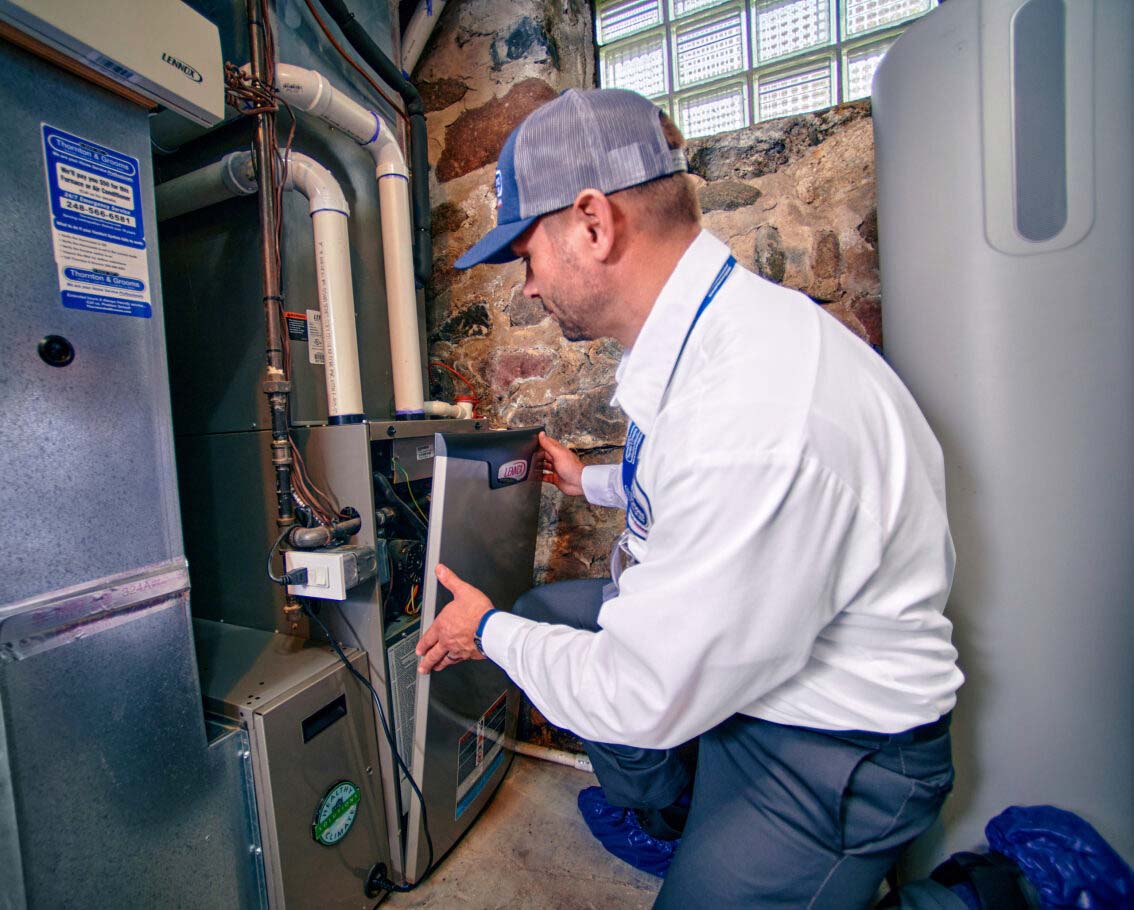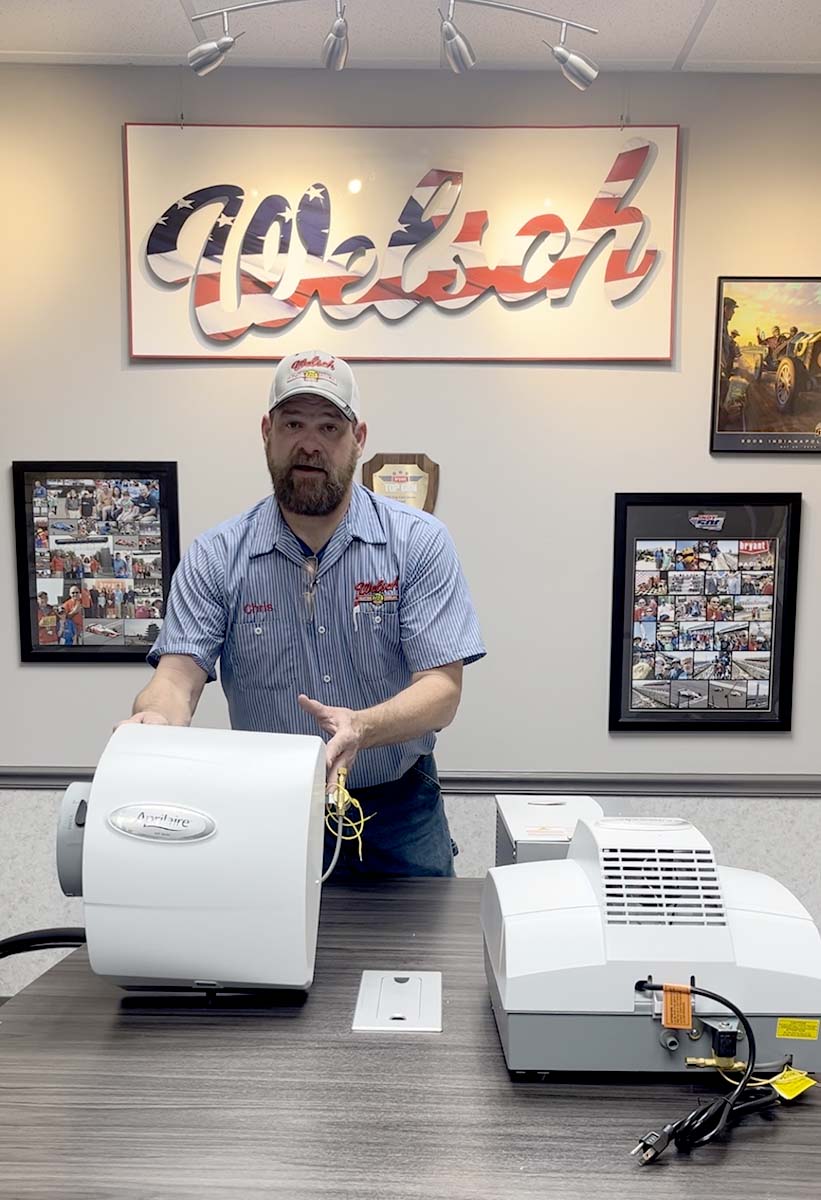Still riding high on newfound popularity that surfaced during the COVID-19 pandemic, whole-home humidification systems continue to get plenty of notice from the general public.
Between the overall general health benefits, increased levels of comfort and air quality, and the fact that these systems can be easily blended into existing central HVAC infrastructure, they are an item every contractor should consider adding to their repertoire.
The Benefits
By controlling the level of relative humidity within an environment, HVAC techs can help to improve indoor air quality (IAQ), reduce static electricity, alleviate issues occupants are experiencing with dry skin, and reduce allergens and associated respiratory problems.
“A humidifier offers a more comfortable home,” said Butch Welsch, owner of Welsch Heating & Cooling. “Eliminating the dry air reduces static electricity, helps people with dry skin, reduces allergies, respiratory issues, and often reduces snoring.”
For those who suffer issues brought on by a lack of moisture in the air, Matthew Bergstrom, president at Thornton & Grooms Heating, Cooling & Plumbing, said these systems can create a more comfortable equilibrium.
“Medically, if we can keep balanced moisture content in our nasal cavity, it helps us to stay healthier,” Bergstrom said. “We like to help customers understand that heating/cooling and IAQ work together as a system — the furnace or air handler are turning over/circulating the air in your home multiple times per hour, making it one of the best options (if not the best option) for whole-home humidification. And it is just more comfortable — the little bit denser air just feels more comfortable at a lower temperature.”
Controlling humidity also has the added benefit of helping to extend the lifespan of wood floors and furniture, plus some niche benefits like helping to keep musical instruments in tune.
“This helps eliminate the dry air that can irritate and inflame the airways in your nose and throat,” said Billy Stevens, CEO of Sera Systems. “They also help the wood structure in the home — the less humidity, the dryer the wood; the more humidity, the wood swells. Humidifiers will also help keep your piano tuned. Many people with pianos request humidifiers in the home.”
Owner
Welsch Heating & Cooling
Installation
Whole-home humidification systems can be patched into existing central HVAC systems without significant modification to the existing ductwork infrastructure, making them an easy stand-alone seller or add-on — and, in most residential and commercial furnace rooms, water and drain connections are typically within reach.
“Humidifiers can typically be installed in any home very easily — most cases do not require any major ductwork modifications,” Welsch said. “Usually, water access is nearby, and if the humidifier requires a drain, that can typically be connected into the air conditioning coil drain system.”

EASY INSTALLATION: Most humidification systems are easily adapted to forced air systems, either by using by-pass air to push through the humidification unit, or, if that’s not an option because of how the ductwork is set up, a fan-powered humidifier can be used. (Courtesy of Matthew Bergstrom)
Even in utility rooms where a workaround is required, that still isn’t much of a barrier.
“Most humidification systems are super easy to adapt to forced air systems, either by using bypass air to push through the humidification unit or, if that’s not an option because of how the ductwork is set up, a fan-powered humidifier can be used,” Bergstrom said. “These two would be the easiest.”
Another option, Bergstrom said, is steam-generating humidification, which is a good fit when a bypass or fan-powered unit can’t provide enough humidification for a home.
“This is the case sometimes in larger homes, homes with a lot of wood floor and furniture, or when specific levels of humidity are required to be maintained for artwork, instruments (piano or violin), or health,” Bergstrom said. “Steam is a little more involved to size and requires its own 220V electrical circuit, making it cost exponentially more than a typical humidifier.”
Alleviating Customer Service
The idea of adding moist air to a duct system may cause some customers to worry about the potential for mold growth, but with a correctly sized system, that isn’t much of an issue.
“As long as the humidifier is sized properly for your HVAC unit, there are no concerns,” Stevens said. “To ensure they continue to work properly, you should have them checked yearly.”
These new systems also are designed differently than those of days past, so it’s important to let customers know improvements have been made.
“Modern humidifiers do not have a pan full of water as the original humidifiers utilized,” Welsch said. “Therefore, the problem of mold has been completely eliminated.”
Bergstrom agreed that mold typically is on the mind of anyone looking to add a whole-home humidification system, but again, a little education can go a long way when it comes to making a sale.
“Mold is the biggest, and this has been mostly fixed by going with a flow-thru type humidifier — water flows over a panel rather than sitting in a pan,” Bergstrom said. “Some say they waste water — they do in part of the process, but if they are set up correctly, you save more in gas and electricity than you use in water, and you are more comfortable and healthy as a result.”
Energy Savings
“Another benefit is the fact that air with moisture feels more comfortable to a human, and therefore it is usually possible to lower the thermostat temperature by a couple of degrees and be just as comfortable if there is a humidifier present,” Welsch said. “This, in turn, reduces the operating cost of the heating system.”
Humid air feels warmer, which allows occupants to lower thermostatic temperature and reduce heating costs.
“By adding humidity to the home, it will feel slightly warmer,” Stevens said. “This allows you to keep the thermostat at a lower temperature in the winter, saving on run time.”
Bergstrom said that typically, a homeowner can set their temperature 2 to 4 degrees lower while achieving the same comfort level.
Popularity

POPULAR ITEMS: According to Butch Welsch, these two models are some of the most prevalent they’re seeing in use: on the left, is a by-pass, which utilizes the difference in pressure between the supply plenum and return air drop to push the air over the moistened pad; on the right, a unit called a “Power Humidifier” because it has a fan which circulates the warm air from the furnace over the moistened pad and back into the supply plenum. (Courtesy of Butch Welsch)
As the pandemic raged and people were more concerned about airborne particulates in general, air quality quickly moved up the list of customers' priorities. Coupled with the fact that more people were spending time indoors and work-from-home policies became commonplace, the whole-home humidification system found itself in the spotlight.
“Since COVID-19, there has definitely been a lot more awareness placed on the air quality in a home,” Welsch said. “Therefore, we have seen considerably more interest in humidifiers, dehumidifiers for the summer, and especially air filters. Because the owners are recognizing the benefits of these devices, as word spreads, we don’t see this market going away anytime soon.”
When talking to property owners, selling the benefits associated with whole-home humidification systems should “always be top of mind,” Bergstrom said.
“IAQ (including humidification) is part of the HVAC system, in my opinion, and should be offered to each homeowner as an option when they are thinking about replacement, having their system maintained or repaired,” he said. “Good, properly installed and maintained [humidification] makes sense for most homeowners.”


Report Abusive Comment